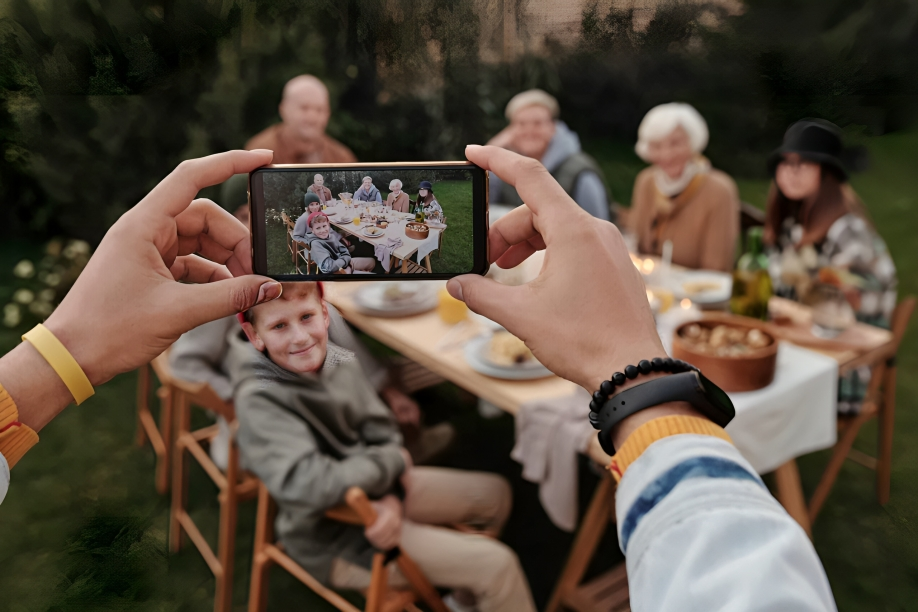Table of Contents
ToggleIntroduction
Memories are the precious fragments of our lives, holding within them the essence of our experiences. In a world that constantly moves forward, capturing memories allows us to hold onto moments that might otherwise slip away. Whether it’s through photography, writing, or even simple storytelling, the act of preserving memories connects us to our past, shaping our present and future. In this article, we will explore the art of capturing memories and its importance in the digital age. We will also look at different ways to ensure that these moments remain vivid.
The Importance of Capturing Memories
Memories define who we are and where we come from, making them an essential part of life. By preserving memories, we give ourselves the chance to relive special moments that brought us joy or taught us important lessons. Capturing these moments also allows us to share our lives with others, fostering stronger connections. As we move through different stages of life, our memories serve as a comforting reminder of the paths we’ve walked. Consequently, the ability to recall and revisit these memories becomes invaluable.
Photography: Freezing Moments in Time
One of the most popular ways to capture memories is through photography. The invention of the camera revolutionized how we preserve our experiences, allowing us to visually freeze moments in time. Photographs tell stories that words sometimes fail to express, making them a powerful tool for memory preservation. Every picture carries a part of the emotions felt at the time, allowing us to relive the joy, sadness, or excitement whenever we revisit them. Furthermore, with the rise of smartphones, capturing high-quality photos has become easier than ever before.
Yet, the convenience of digital photography can also lead to an overwhelming number of photos. To make the most of this tool, it is crucial to curate and organize images. By carefully selecting photos that truly resonate, we can create meaningful collections that reflect the essence of our experiences. Moreover, printing photos or creating albums can add a tangible aspect to our memories, making them more personal.
Writing: The Power of Words in Memory Preservation
While photography captures the visual elements of a moment, writing allows us to delve deeper into the emotions and thoughts behind those moments. Through journaling or storytelling, we can describe the sights, sounds, and feelings that surrounded a particular experience. Writing helps us to remember not only what happened, but also why it mattered to us. It offers a personal, introspective look at the memories we hold dear.
Additionally, writing allows for creative expression, letting us explore different perspectives and details. By capturing memories through words, we immortalize them in a form that can be shared across generations. Unlike photographs, which are often limited by what they can show, writing opens up the imagination, filling in the gaps left by time. For this reason, combining writing with other methods of memory preservation can offer a fuller picture of our most cherished moments.
Storytelling: Sharing Memories Through Oral Tradition
Long before the invention of cameras or written language, humans relied on storytelling to pass down memories. Oral tradition was the primary way that cultures preserved their history, shared lessons, and kept loved ones’ legacies alive. Storytelling continues to be an effective way to capture memories, particularly because it fosters a personal connection between the storyteller and the listener.
Telling stories allows us to reanimate the past, giving life to the experiences we hold dear. By sharing memories with others, we create a bond that strengthens relationships and fosters a sense of continuity. Furthermore, storytelling allows for adaptability, as the way we tell our stories can change depending on the audience. This flexibility keeps memories alive, evolving as they are passed down through generations. The act of sharing stories also helps us remember details we might otherwise forget.
Digital Preservation: The Modern Approach to Memory Keeping
With the rise of technology, capturing memories has expanded into the digital realm. Today, social media platforms, cloud storage, and digital archives make it easier than ever to store and share memories. Platforms like Instagram or Facebook serve as virtual scrapbooks, allowing us to document and revisit our experiences. Moreover, cloud storage offers a secure way to keep digital photos, videos, and written records safe from physical damage.
Despite its many advantages, digital memory preservation comes with its own set of challenges. Over time, digital formats can become outdated, or files may be accidentally deleted. To avoid losing precious memories, it is essential to back up files and consider printing or physically preserving important moments. Ultimately, combining digital and traditional methods of capturing memories provides the best protection for our personal history.
The Emotional Impact of Preserving Memories
Capturing memories is not just about storing moments; it’s about preserving the emotions tied to those moments. Whether it’s the warmth of a family reunion, the excitement of a vacation, or the sorrow of a farewell, memories carry deep emotional significance. Preserving them allows us to revisit those feelings, sometimes offering comfort or closure.
Moreover, memories serve as a tool for self-reflection and growth. By looking back on our experiences, we gain insights into how we have changed, what we’ve learned, and how far we’ve come. This emotional connection to our past strengthens our understanding of ourselves and our relationships with others. Consequently, the act of capturing memories becomes a meaningful practice that enriches our lives.
Conclusion
In an ever-changing world, capturing memories serves as a vital way to preserve the essence of our lives. Through photography, writing, storytelling, and digital means, we can keep our most important experiences alive, revisiting them whenever we choose. By preserving memories, we maintain a sense of continuity, ensuring that the moments we treasure are never lost to time. As we look back on these captured moments, we reconnect with the emotions, lessons, and joy that shape who we are today. In this way, capturing memories allows us to live not only in the present but also with a deep appreciation for the past.











